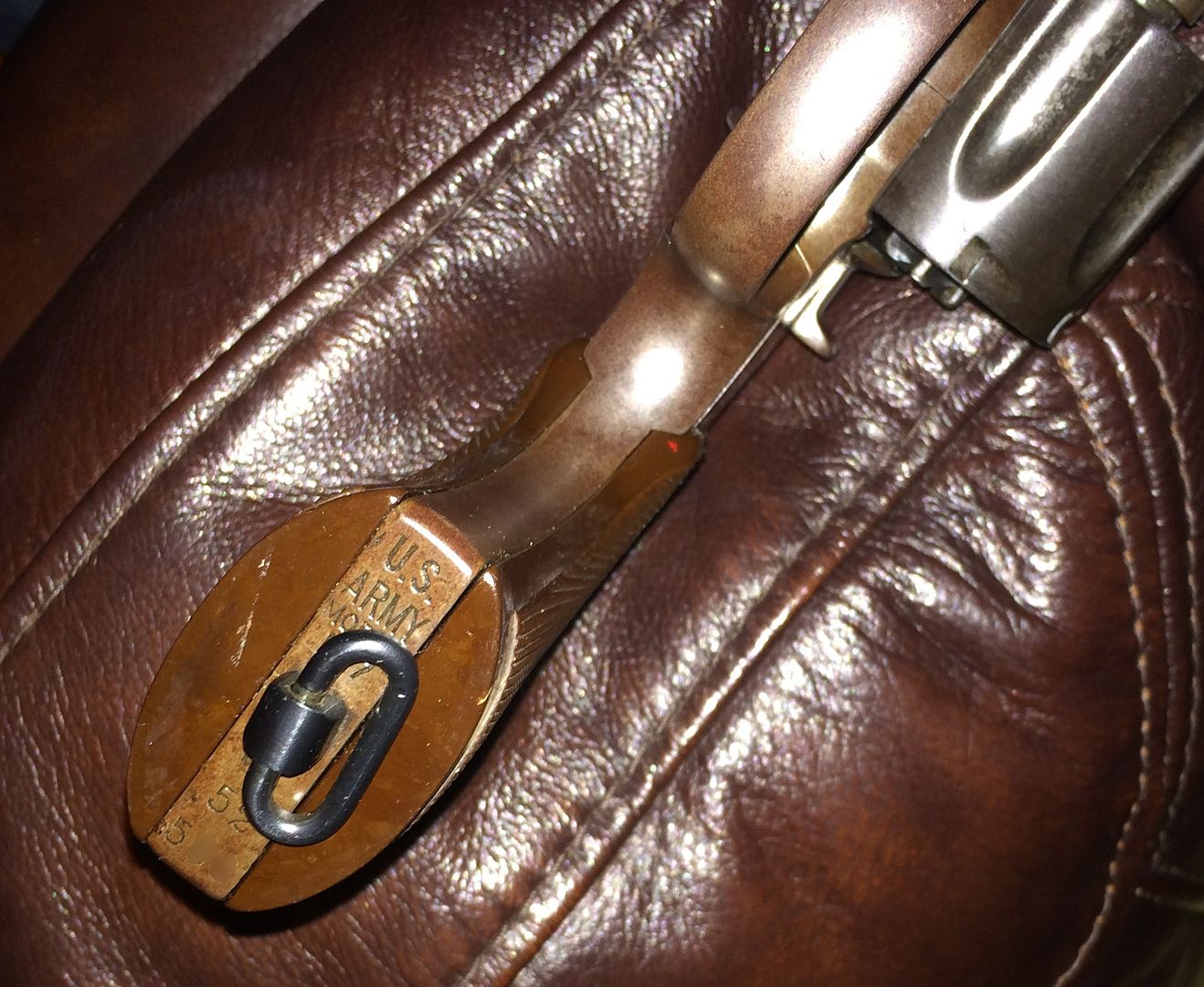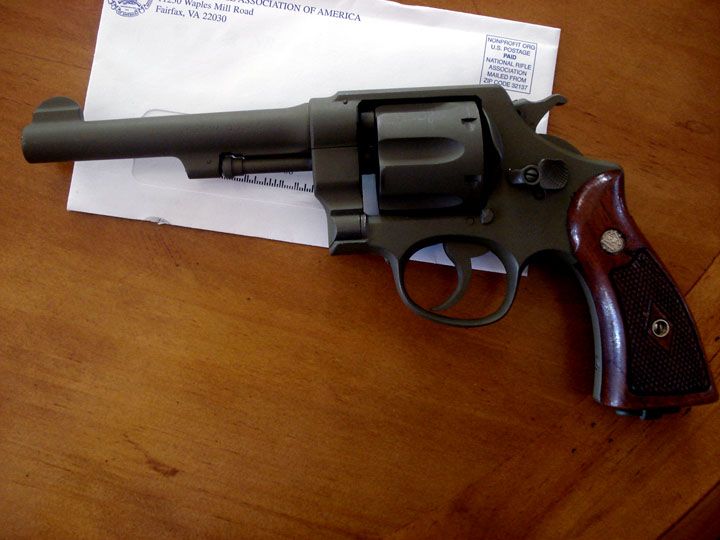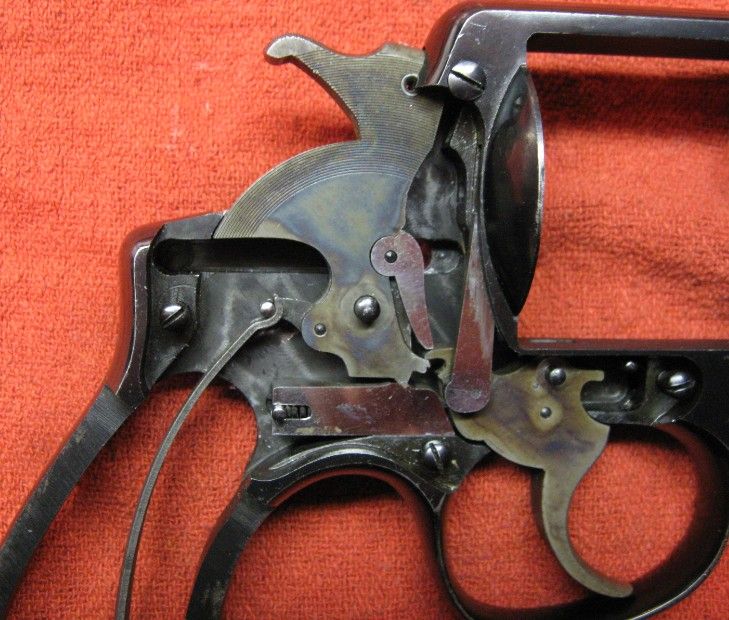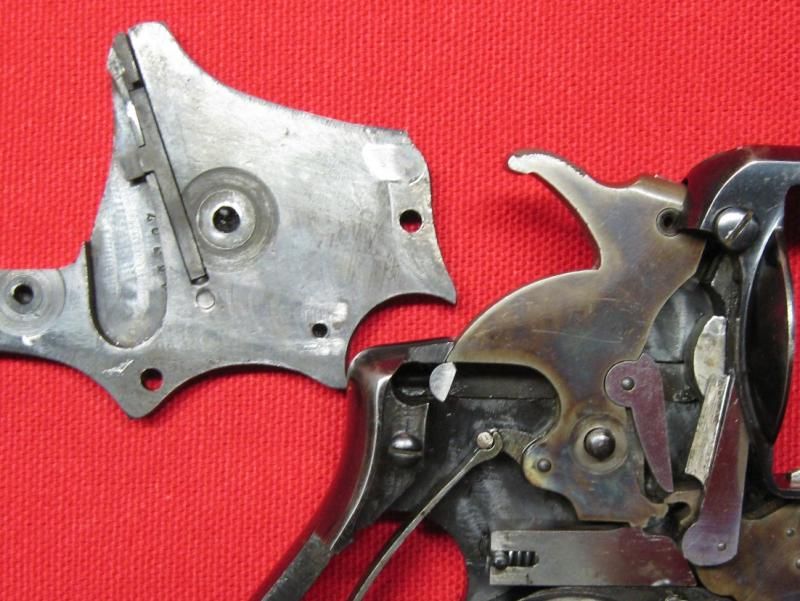Mike Irwin
Staff
"FWIW two versions exist, an early version with a pivot and a separate coil spring, and a later fixed version that is flexible and acts as its own leaf spring; I believe the American M1917's used the first version, and the first-run Brazilians used the second."
Correct on the two versions of the wing hammer block.
The first version was used into the 1920s. The first version also had a pin in the sideplate that rode on the hand.
These pictures are of, I believe, a first version hammer block on my early late teens early 20s Regulation Police .32.


The second version of the wing hammer block omitted the pin and put a subwing (my terminology sucks) on the hammer block, and made the hand into an inclined plane that pushed the hammer block out of the way when the trigger was pulled.
Correct on the two versions of the wing hammer block.
The first version was used into the 1920s. The first version also had a pin in the sideplate that rode on the hand.
These pictures are of, I believe, a first version hammer block on my early late teens early 20s Regulation Police .32.


The second version of the wing hammer block omitted the pin and put a subwing (my terminology sucks) on the hammer block, and made the hand into an inclined plane that pushed the hammer block out of the way when the trigger was pulled.




